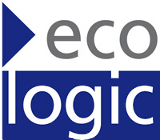As governments plan for a transition to a low carbon economy, there are many potential policy tools in the toolbox.
Green Banks can be one of the most effective and efficient tools to help catalyze this transition by mobilizing private capital for the deployment of clean energy.
The transition to the low-carbon economy is a multi-trillion dollar endeavor (World Economic Forum, The Green Investment Report 2013) and impacts millions of homes, buildings, and communities. Government and public funds alone cannot finance or coordinate the solution. Success will require mobilizing the deep investment capacity available from pension funds, banks and other institutional investors.
Yet many of the companies seeking infrastructure financing to deploy their clean energy innovations face challenges mobilizing capital despite promoting proven technologies. In particular, mainstream private investors often lack the expertise to properly evaluate the risk of newer fields like energy storage, geothermal, and energy efficiency. Also these investors typically conduct transactions in the denomination of $100M+, while many of these clean energy transactions are initially much smaller. The opportunity cost makes smaller transactions prohibitive.
Public Green Bank funds can catalyze the adoption of private funds primarily in two ways:
• Adjusting the risk/reward equation for private investors and/or
• Facilitating transactions, including providing information, due diligence capacity, and/or “warehousing” multiple deals until they reach volumes sufficient for mainstream capital.
Walking the risk/reward tight-rope
In mainstream asset classes lenders have standard risk analysis tools to price the cost of their capital, for example in real estate or manufacturing companies. These standard models are lacking for newer clean energy sectors. A Green Bank, using Swiss army knife flexibility, can deploy a variety of financial tools including credit guarantees, low-interest loans, first loss reserves, and others to either decrease the downside risk or increase the upside potential, and in turn attract private investors.
This model of public funds attracting private capital by changing the risk/reward equation has been proven out before; in one example the Israeli public sector Yozma fund-of-fund investment model kick started the now booming startup and venture industry in the country – public funds were used to co-invest with private investors with downside risk mitigation. This change in the risk/reward model attracted top-tier VCs and launched the now successful startup industry. The European Fund for Strategic Investments (EFSI) is also championing this approach, though it is too early to evaluate outcomes.
This is exactly the conversation we have with private clean energy investors When looking to provide project finance for a new company or sector the investor typically says: “look, this (geothermal/ fuel cell/ storage) company has limited operating history, and I’ve never done a (geothermal/ fuel cell/ storage) transaction before. I am okay taking on risk, but the potential returns need to be in line. When the company has a longer track record, my return threshold will probably go down.” Innovative financing instruments can help shift this mindset.
Transaction efficiency
There are significant transaction costs involved in setting up a project financing. The criteria for institutional investors are even more stringent, often requiring independent due diligence and engineering consultants, large legal firms, which of course result in bills. Thus the costs of preparing a $1M transaction can frequently be prohibitive.
As a result, until a new energy efficiency firm completes its first $1M and $5M of transaction, the path and pipeline to scale is hard. Green Banks can help by aggregating deals over time. The Green Bank provides a line of credit to “warehouse” or store financial loans over a period. Once the warehouse reaches a sufficient scale, these deals can then be sold to private investors.
Moreover, private investors benefit from the independent due diligence that the Green Bank has already completed, and the experience with completed projects that it has gained. These factors can help to reduce transactional costs and perceived risk among institutional investors.
Real-politik
Green Banks can also be positioned as politically attractive across the left/right spectrum – while inherently attractive to climate supporters, Green Banks can be structured as net-neutral (or net positive) for public coffers. By making strategic loans and investments backed by infrastructure projects Green Banks can actually end up cash positive. Also Green Banks have the explicit purpose of leveraging up with private capital, and spurring new job creation industries.
For example:
• The US Department of Energy loan portfolio (that serves substantially the same purpose as a Green Bank) has issued over $25 billion in loans and guarantees, and earned over $0.7B in net profit (including $0.8 B in actual and estimated portfolio write-offs).
• The NY Green Bank has been a leader in the space. For example, it is providing a $4M revolving construction finance facility to a small wind developer to build over 160 distributed (smaller) wind resources for homes, farms, and business. Once the projects are built, an institutional bank takes over the financing. NY Green Bank has now closed 11 transactions, committing $158 million of its capital, stimulating almost $686 million in total investments in clean energy projects across the state.
Conclusion
Green Banks can be the most effective policy tool in helping bridge the gap to attract mainstream capital to clean energy. Green Banks can be equipped with multiple ‘tools’ to achieve this goal, but fundamentally work to shift the balance in the risk-reward equation for early investors, and help with transaction efficiency.
The Government of Ontario has recently released an ambitious Climate Action Plan which included planned funding for a Green Bank out of cap and trade revenues. The Plan specifically cited the Green Banks in US states as models. Similar conversations are ongoing at the Canadian federal level. A new coordinating body, the green bank network will help policymakers share best practices across state and country lines. These developments highlight a growing awareness of the role that Green Banks can play in driving forward the energy transition in the EU and North America. If structured to solve the problems outlined above, this can be an aggressive policy tool. If your (state/province/country) isn’t yet considering a Green Bank as part of its climate policy, you are missing out.
David Berliner is an Emerging Leaders in Environmental and Energy Policy (ELEEP) fellow with the Atlantic Council and Ecologic Institute.
Photo: Sean Pavone Photo






